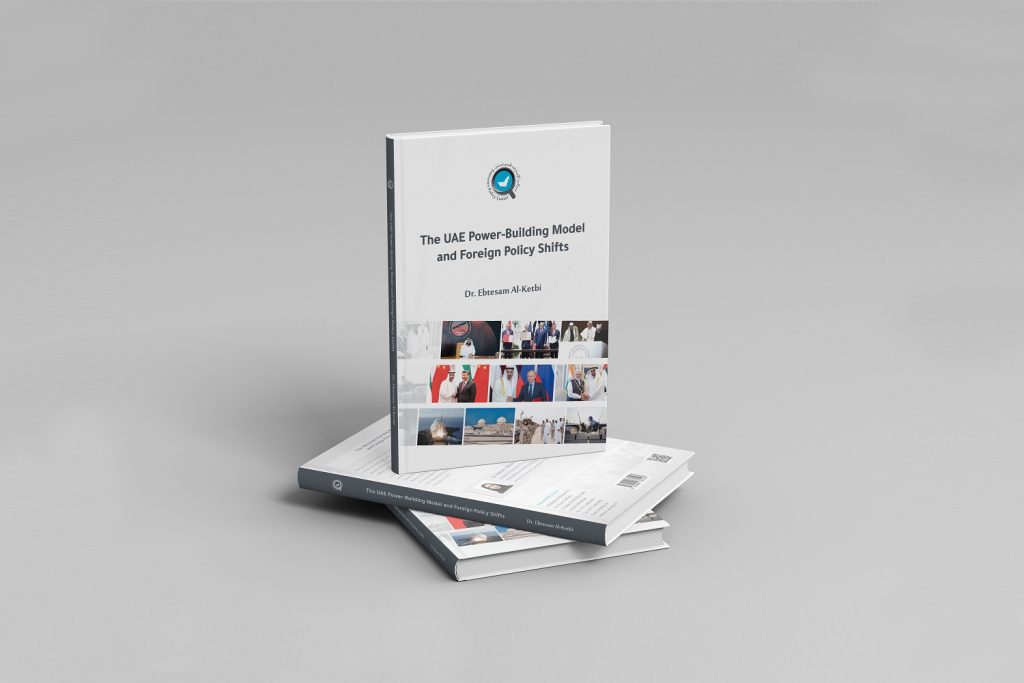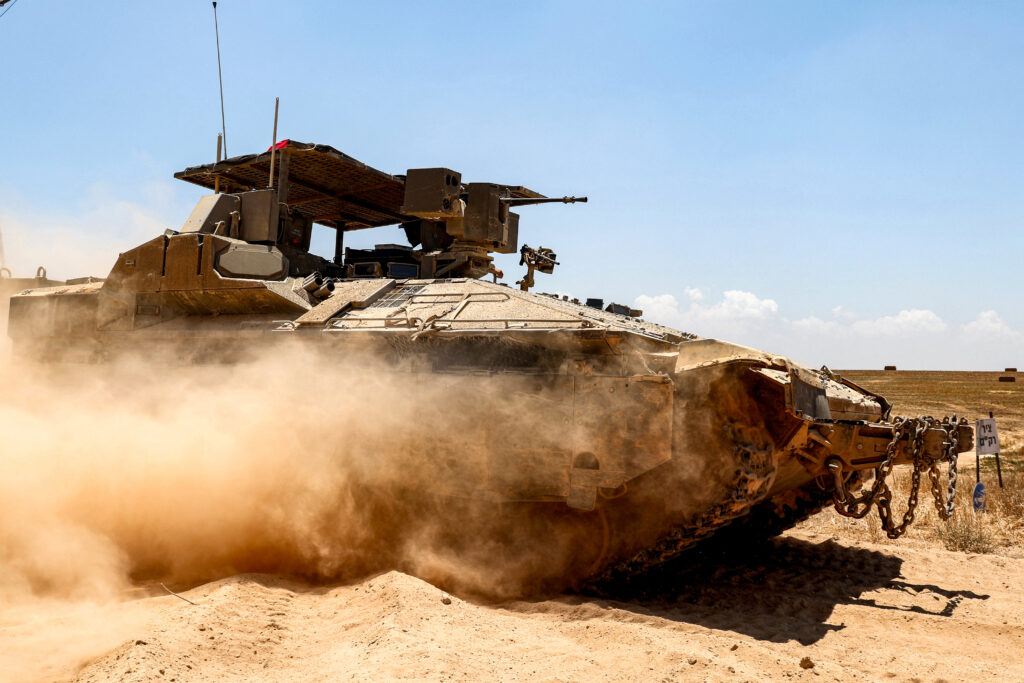Review of The UAE Power-Building Model and Foreign Policy Shifts
- - July 1, 2021

Book authored by Dr Ebtesam Al-Ketbi
Published: 22 March 2021
By Albadr Alshateri
The United Arab Emirates (UAE) has recently emerged as a regional power that punches above its weight. Dr Ebtesam Al-Ketbi, a former professor of Political Science, and the head of the prestigious Emirates Policy Center, is in a unique position to analyse the rise of the UAE. To complement her expertise, she also has her ears to the ground when it comes to foreign policy formulation. Her recent book, The UAE Power-Building Model and Foreign Policy Shifts, is testimony to this.
Dr Al-Ketbi argues that the UAE represents a good example of a small power facing challenges from its region and shifts in the international order. From the outset, she outlines a few questions which provide a framework for the entire book. These pertain to the regional and international forces that have shaped UAE foreign policy, as well as the country’s threat perception. Another question concerns the elements that make up the UAE’s power-building model. Finally, she asks if the country can be characterised as a middle power.
Small states, according to Dr Al-Ketbi, are marginalised in the international system, and seek to overcome weakness to sustain themselves. The UAE is such a state, and has sought to improve its position in its region and the world. Utilising its tremendous resources, soft and hard power, the forward-looking leadership transformed the country into a hub for trade, a financial centre, and a diplomatic powerhouse.
Dr Al-Ketbi credits the current Crown Prince —Sheikh Mohammad bin Zayed, often referred to as MBZ— for building the UAE’s hard power. Since his days as the chief of staff of the armed forces, MBZ has built a strong and “modern military of the highest international standards”, according to the author. She adds that the development of the military focused on “ensuring competence and developing distinguished combat skills, backed by modern training regimes and armaments from a variety of suppliers”.
Today, the UAE boasts a battle-tested army which, according to military experts, has been the most professional and effective in “the region for the past two decades”, so much so that former US Defence Secretary James Mattis dubbed the country “Little Sparta”.
The development of capabilities extends beyond hard power – the UAE has also fine-tuned its soft power capabilities. According to Dr Al-Ketbi, the UAE’s performance in fields such as the economy, culture, health, environment, and green energy earned it the title of “soft power master”.
Her argument, it is worth mentioning, is that the UAE has taken a voluntarist approach to international affairs. The Nietzschean will to power is plainly in evidence, and the author states it frankly. Are there, however, structural challenges to such an evolution? Why, for instance, has the UAE embarked on such a mission when older states, such as Saudi Arabia and Kuwait, have not done so? Does the “great man theory” explain the country’s gigantic strides, or are other factors responsible?
The answers to these questions come quickly. These developments include: (1) The Iraqi invasion of Kuwait, which led to the breakdown of the concept of Arab collective security; (2) The structural transformation of the international order after the collapse of the Soviet Union and the emergence of the US as the sole superpower; (3) The September 11 terrorist attacks on the US, and President George W. Bush’s Global War on Terrorism (4) The subsequent removal of Iraq as a regional actor after the US invasion, and Iranian military and political expansionism in its wake; (5) The Arab Spring , which led to the collapse of a few Arab regimes, thus upending the regional order. These developments, inter alia, propelled the UAE to step up to the plate. It is here where one can see elements of Arnold Toynbee’s “challenge and response” theory.
The UAE was able to turn the challenges into opportunities. It undertook a restructuring of its foreign policy by adopting a proactive stance and solidifying ties with Washington. The UAE was the only Arab country to partake in the US campaign against the Taliban and Al-Qaida in Afghanistan. It also diversified its ties with other major powers, such as China and Russia, by creating common economic and security interests. Finally, it also reached out to African, Asian, and Latin American nations.
The election of Donald Trump in 2016 introduced an element of urgency to the UAE’s strategy. Mr Trump’s “America First” approach and his clarion call for ending the “forever wars” in the Middle East, prompted the Emirates to rethink its foreign policy. Burden sharing was atop Mr Trump’s agenda, and the UAE obliged, the book claims.
However, the author appears remiss on this issue. The UAE shared the burden of security long before Mr Trump — or President Barack Obama, for that matter. It took an active role in the liberation of Kuwait and also participated in the US’ Operation Restore Hope in Somalia. The UAE was in Bosnia, Kosovo, and Afghanistan. It also cooperated in the “War on Terror”, and in containing Iran activities in the region. The author herself contradicted her own view when she writes that “the UAE presented itself long before the September 11 attacks as an ideal stakeholder in the US ‘burden-sharing’ policy”.
Moving on from the reasons behind the UAE’s push to develop power and influence, the book tackles the issues which keep the country’s leadership awake at night, and the list is fairly lengthy. The first is political Islam. The UAE sees mixing religion and politics as dangerous for the region’s stability. From its perspective, political Islam currents have trans-national agendas that seek to undermine the nation-state. These currents also spawn extremism and justify violence, breaking down society and political order, as the Arab Spring showed.
In this regard, the UAE views Turkey, a regional player that propagates political Islam to spread its influence, as a threat. Turkey fashioned an alliance with Qatar to further its goals of neo-Ottomanism, a move driven by nostalgia for its past as the dominant power in the Arab region. Its presence in Iraq and Syria fuels fears of Ankara’s ambitions from the UAE and its allies, hence, the Emirates-Saudi- Cyprus-Greece entente to counter Turkey’s assertive policies in the Eastern Mediterranean.
Iran is another issue for the UAE, but unlike with Turkey, where the relationship appears to be zero-sum, the author argues that with Tehran, Abu Dhabi’s approach is one of co-existence. For geopolitical and commercial reasons, the UAE strives to avoid military confrontation. However, some issues make the ties between Tehran and Abu Dhabi fraught. The occupation of Abu Musa and the Greater and Lesser Tunbs, three islands claimed by the UAE, is one. The second is Iran’s intervention in Gulf and Arab affairs. Iran’s sectarian policies, its support for militias and armed groups, and the threat from its nuclear and missile programmes make up the other issues.
To blunt the threat from the two axes of Turkey and Iran, which represent Sunni and Shiite political Islam, respectively, the UAE has sought alliances with Egypt and Saudi Arabia. The author writes that to do so, the UAE adopted a “defensive position” against these two. Instead of being an initiator of action, the UAE, she writes, adopts “a defensive rather than [an] offensive strategy in its regional roles”. However, she fails to cite examples for this claim, which would have strengthened her case.
Finally, the author explores the power-building model represented by the UAE, writing that the federal system serves as its foundation of power. Founded in 1971, it has persisted and prospered for five decades. The basis of the union was not duress or conflict, but persuasion and normative consensus.
The book argues that the UAE learned from the failed bids by several Arab states to achieve unification. She points to the attempts by Libya, Egypt, Sudan, and Syria to form a union with different combinations at different times, which ended in failure. Today, the UAE stands as a strong and stable political system that allows it to make tough and bold decisions.
The second element of power building is the development model the UAE has adopted. The book makes a persuasive case for this, using data to illustrate the country’s leadership in many areas in the region and the world, but fails to explain how it did so.
Other elements in the power-building model include social and religious tolerance, humanitarian aid, and empowerment of women. The UAE has also built a wide range of alliances across the region and the globe. Two stand out, however: That with the US and Saudi Arabia. These are a power multiplier for the UAE. How one can weigh or compare (operationally) different alliances remains an open question.
This is an interesting book — written from an Emirati perspective — on how a young nation aspired to become a regional power to defend its interests and that of the region. Despite its small size (170 pages), it is packed with lots of information and analysis, and is a must-read for those interested in small states — and specifically the Arab Gulf region.
About the Author
Dr Albadr Alshateri was a professor at the UAE National Defense College in Abu Dhabi. He earned a PhD from the University of Michigan in comparative politics, international relations and political economy as well as two masters degrees in political science and in Middle Eastern and North African Studies. Dr Alshateri has received numerous awards, including a prize for his dissertation entitled “The Political Economy of State Formation: The United Arab Emirates in Comparative Perspective”, from the Society for Arab Gulf Studies (USA). He contributed this review to the Middle East Institute.
Image caption: Cover of the book The UAE Power-Building Model and Foreign Policy Shifts. Photo: Emirates Policy Centre
More in This Series
More in This Series
- Jean-Loup Samaan
- - July 11, 2024
- Aisha Al-Sarihi, Ehsan Rasoulinezhad, Jinseok Sung
- - June 20, 2024








